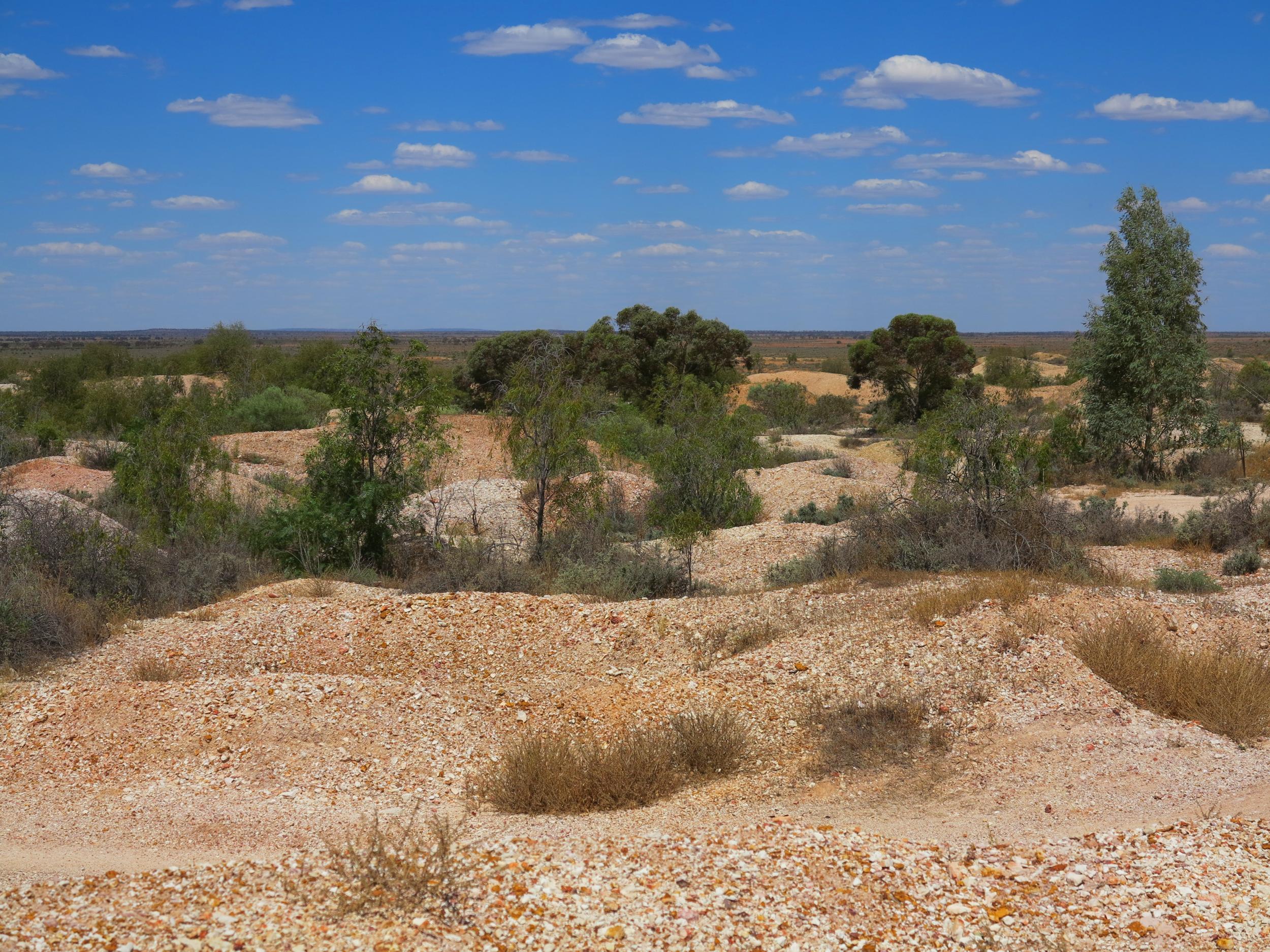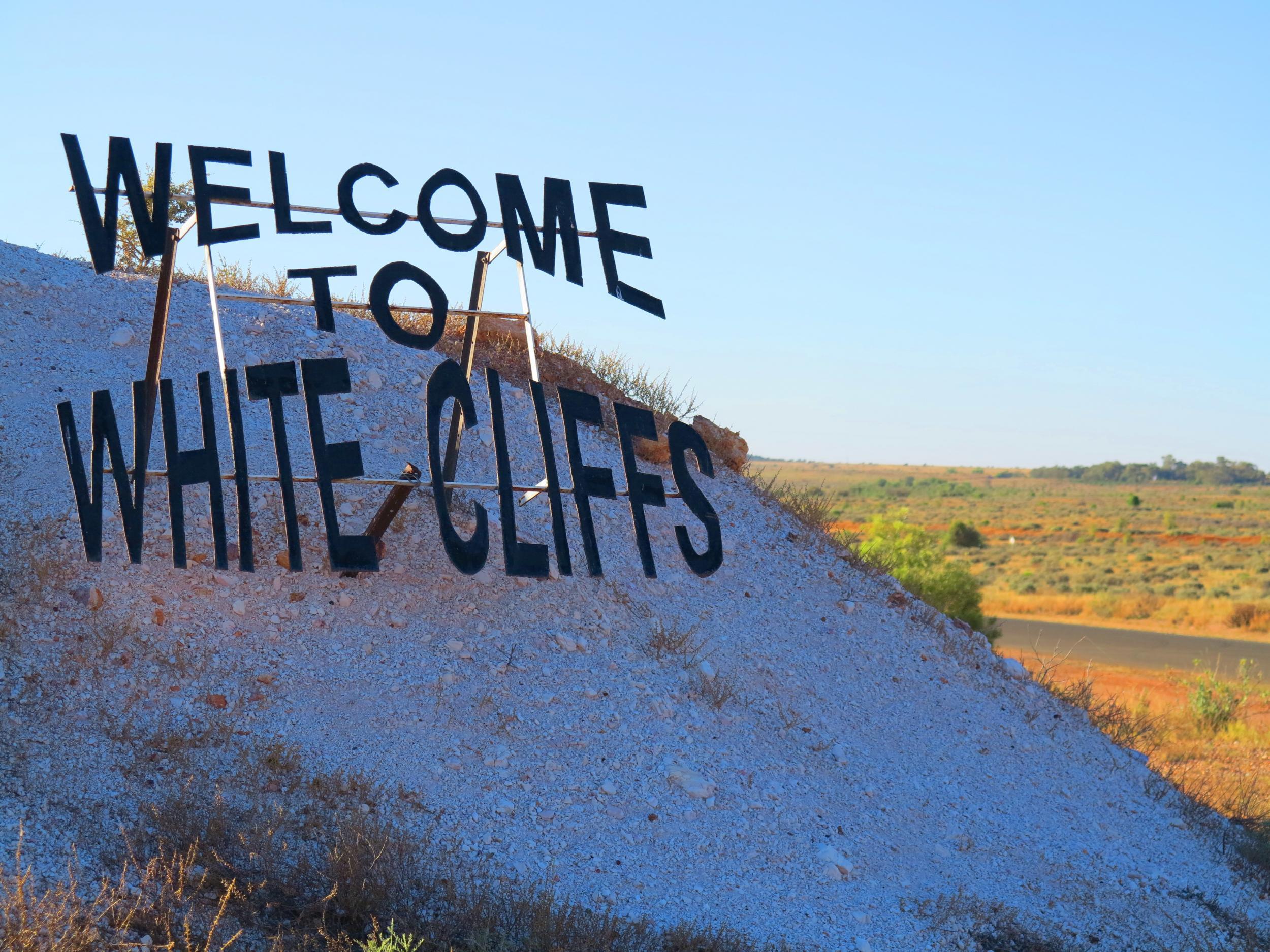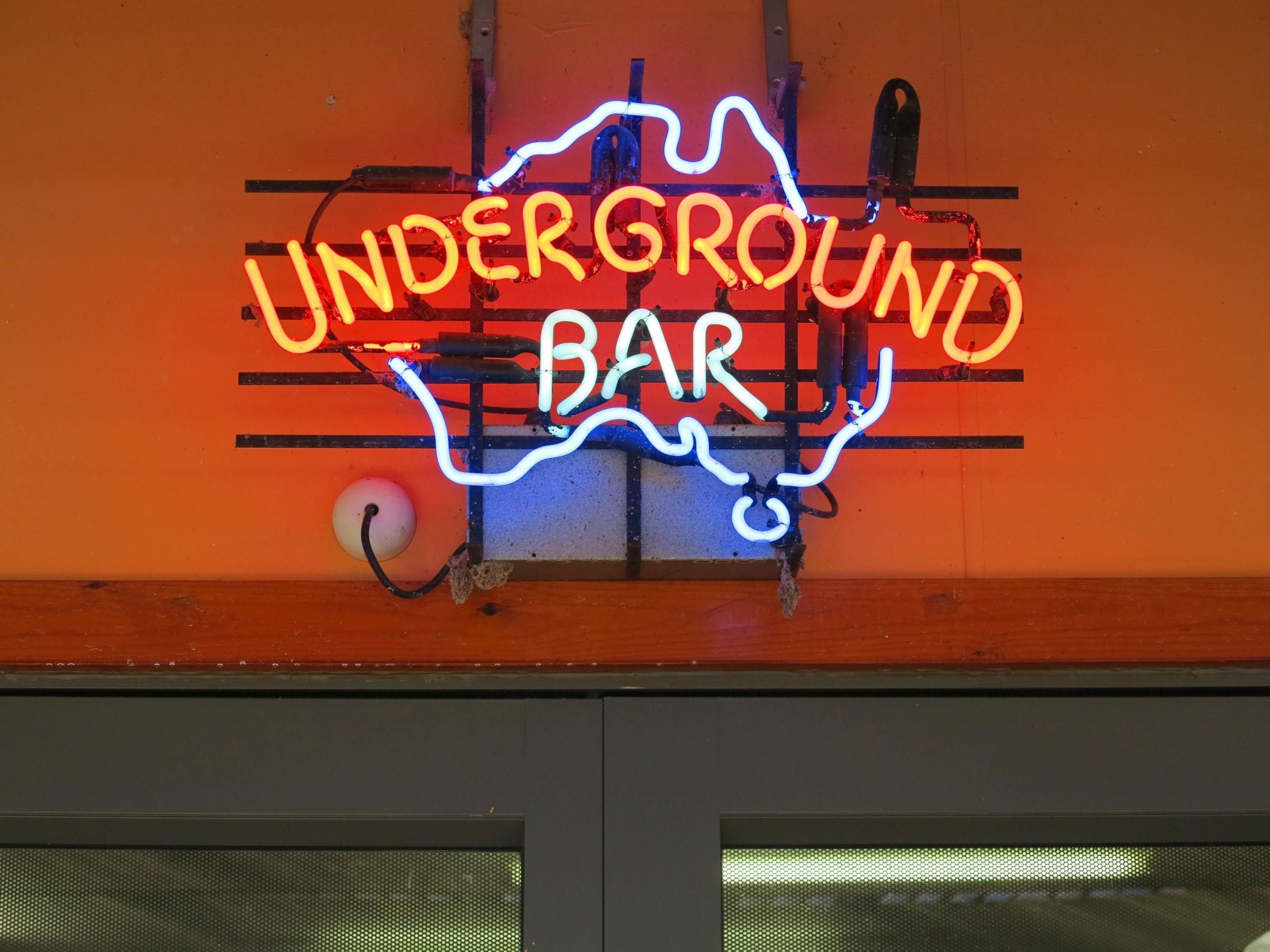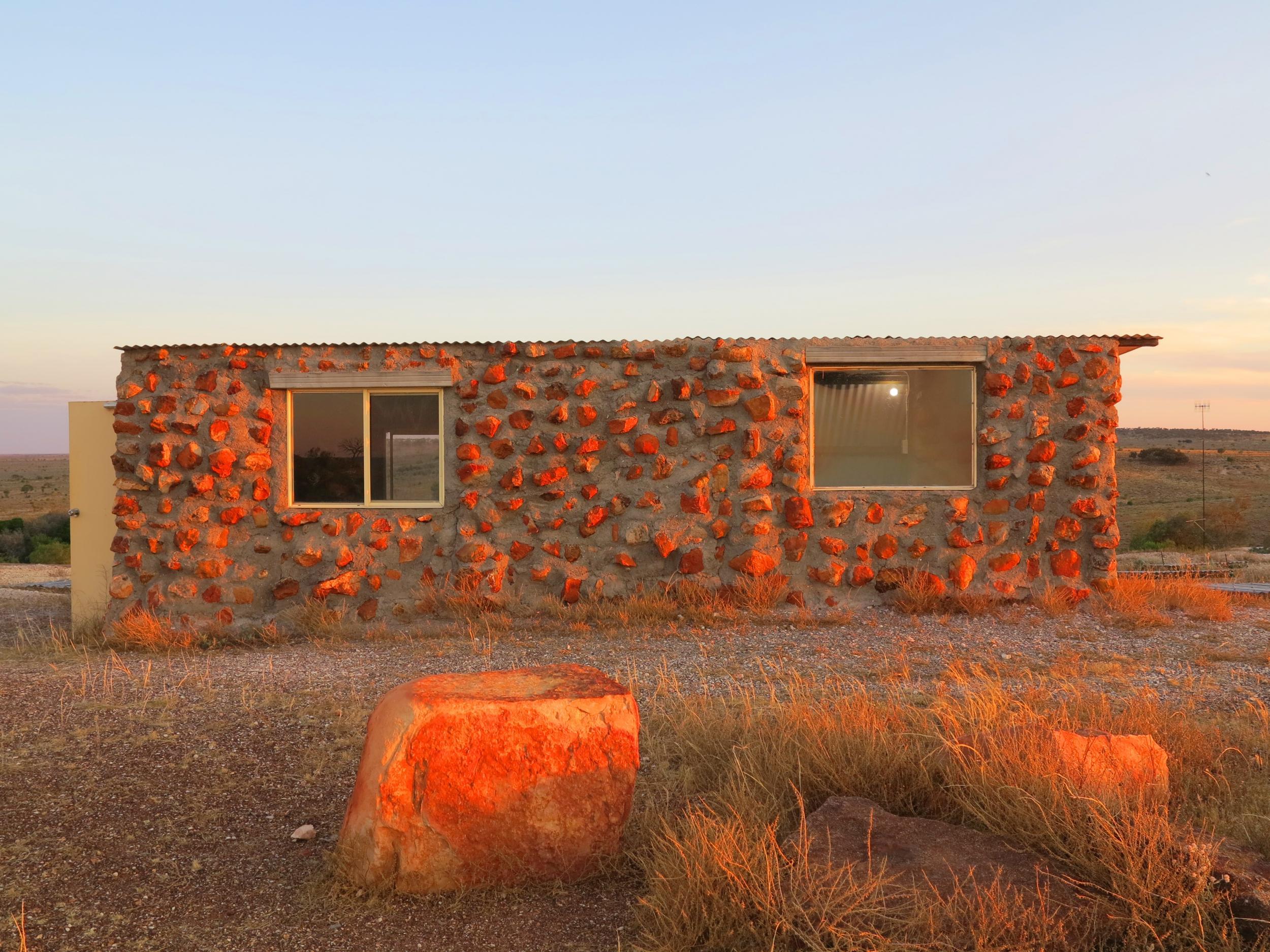White Cliffs: The Australian town where people live underground
In the Outback keeping cool is a matter of survival, so residents of White Cliffs built subterranean homes

Your support helps us to tell the story
This election is still a dead heat, according to most polls. In a fight with such wafer-thin margins, we need reporters on the ground talking to the people Trump and Harris are courting. Your support allows us to keep sending journalists to the story.
The Independent is trusted by 27 million Americans from across the entire political spectrum every month. Unlike many other quality news outlets, we choose not to lock you out of our reporting and analysis with paywalls. But quality journalism must still be paid for.
Help us keep bring these critical stories to light. Your support makes all the difference.
Twelve hours’ drive west from Sydney, the hardy residents of the isolated opal mining town of White Cliffs live very different lives to their coastal counterparts. Numbering about a hundred or so, White Cliffs locals aren’t easily found. With only a small collection of buildings above ground, most residents live underground. If you want to meet people in White Cliffs, you have to head, quite literally, down under.
Two things have shaped the face of White Cliffs: opals and heat. The highest recorded temperature of 48.6C occurred in 1973, but it’s not uncommon for the town to experience temperatures above 40C on a regular basis. While Australians are generally accustomed to enduring scorchers, in recent years record-breaking temperatures and prolonged heatwaves have been occurring more frequently. White Cliffs only recently set a new national record for the warmest night-time temperature, with an overnight low of a sweltering 34.2C recorded in February. With scientists confirming that heat stress is Australia’s biggest natural killer (responsible for taking more lives than bushfires, storms and floods combined), keeping cool is a matter of survival.
Featuring subterranean homes, businesses and hotels since the mining boom of the 1800s, in many ways White Cliffs is ahead of the game when it comes to combating the effects of climate change. Well before the world started talking about energy-efficient housing and eco living, the people of White Cliffs were quietly leading a sustainable lifestyle in their ragtag collection of dugout housing. Long before renewable energy was in vogue, White Cliffs had Australia’s first solar power station. Built in 1981, the station is no longer operational, but provides a surreal backdrop to the local golf course that is more scorched earth than well-manicured golf green.

A local artist, Cree Marshall, and her partner, Lindsay White, are underground living experts. Originally from New Zealand, Marshall’s lived in Sydney, Adelaide and Perth but now calls White Cliffs home. “I came to White Cliffs 25 years ago with the plan of staying for a year. When I first got here I thought I was either going to love it or hate it. After 25 years, you can guess which one it was,” she says.
Enjoying year-round temperatures between 22-24C, Marshall’s underground home is an expression of her personality. “I have no intention of roughing it. So even though I live in a cave, it’s a luxurious cave,” she says. Featuring handmade art pieces and mosaic tiles, the dugout is still a work in progress after 10 years of building. “You really need to focus on keeping the air moving. Designing a place that has vents to allow airflow is so important – otherwise you’ll get mildew” explains Marshall, adding that her lifestyle can come at a price. “When you’re living underground it’s easy to become disconnected from nature. We’ve used glass blocks and skylights to provide natural light down the shafts into the bedroom. Grill holes mean we can hear birds singing in the morning.”
Using an old backfilled mineshaft, Cree and Lindsay excavated the site, then designed and furnished it themselves using recycled, reclaimed and donated items. “Because the land our dugout is on is held via a freehold agreement, the banks don’t see it as an asset, so you can’t borrow money to buy or build a dugout. Bit by bit we scrape a bit of money together and use it to buy building supplies and things at auctions and garage sales,” says Cree. This may sound daunting, but they wouldn’t have it any other way. “We’ve got a close connection to our home. You can’t hire a builder to build a dug out, then walk away. You have to do it yourself out here.”

Living underground in dwellings made from reclaimed materials may sound like the stuff of enviro-warriors, yet Cree affirms this is just the way things have always been done in White Cliffs. “Climate change is something we see on the news every now and then but it’s not something we agonise over out here.”
Residents don’t have the monopoly on subterranean living. The White Cliffs Underground Motel is a drawcard for tourists keen on experiencing a night below deck. Built into the side of a hill, the motel entry is like many other Outback motels. You check in at the bar, which is also where you can order meals, sink beers and pat the publican’s dog. The simple rooms with whitewashed, textured walls and 1990s throwback furnishings don’t feature televisions, Wi-Fi or bathrooms, so guests have to navigate a series of corridors not unlike a rabbit warren to find the shared facilities. Spending a night sleeping underground feels unnatural at first. It’s dark and cool, slightly damp too. Once the lights are out it’s just me and the inky darkness. It’s hard to not think about horror films or what would happen if there’s an earthquake. Paranoid thoughts aside though, the tomb-like room is conducive to a good night’s sleep – I soon drop off in the silence, stillness and all-encompassing black.
What is a novelty to visitors is just life for locals. Stepping out of the flyblown heat into a dugout is bliss during the middle of the day when the sun reaches its zenith. At noon, only native reptiles can be found standing by the side of the road, soaking up the sun’s rays. Everyone else is either in their dugout or down a mine shaft looking for opals.

One of those people is opal miner Graeme Dowton. A White Cliffs man through and through, Graeme has lived in the town for 26 years and only recently began spending his summers on the coast with his wife and children who live closer to the city to attend school. When he’s not digging for gem stones, he leads mine tours for tourists and runs the Red Earth Opal shop and café. Living in a five bedroom dugout, Graeme believes that it’s not just an energy-efficient house but a form of artistic expression. “I find the square flat walls of a house very dull now compared to the undulating curved walls of the dugout,” says Graeme. “I'm at peace underground, it's very earthy...”
As for Cree Marshall, will she ever live above ground again? “I’m so used to the sculptural curves of the dugout, that I can’t imagine living in an aboveground box with sharp corners anymore. I’ll avoid that for as long as I possibly can.”
Travel essentials
Getting there
Qantas (qantas.com) operates flights from London to Sydney, with connecting flights to Broken Hill available via Regional Express (rex.com.au). From Broken Hill, Tristate Safaris (tristate.com.au) operates trips to White Cliffs.
Staying there
The White Cliffs Underground Motel (undergroundmotel.com.au) costs from £90, B&B.
More info
visitnsw.com/destinations/outback-nsw
Join our commenting forum
Join thought-provoking conversations, follow other Independent readers and see their replies
Comments